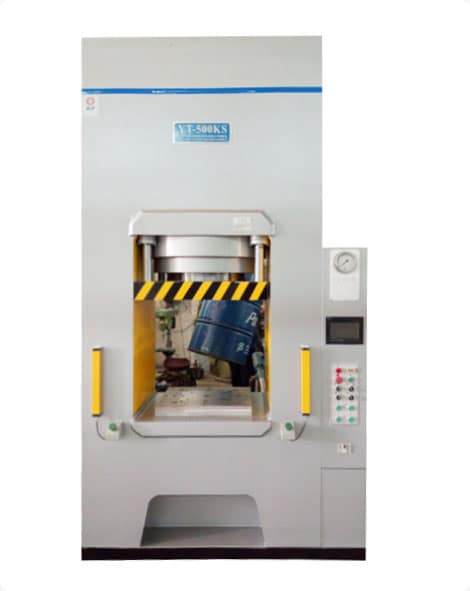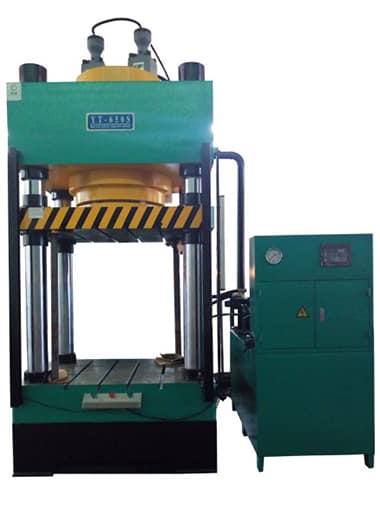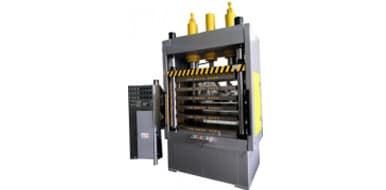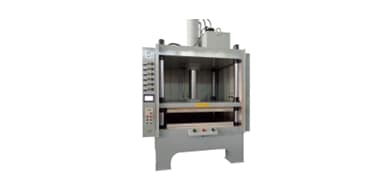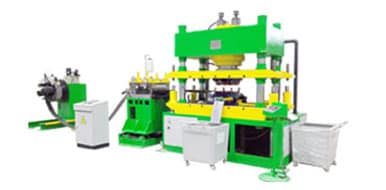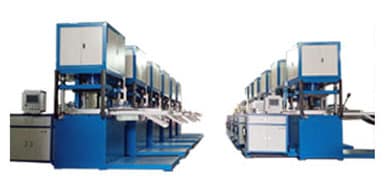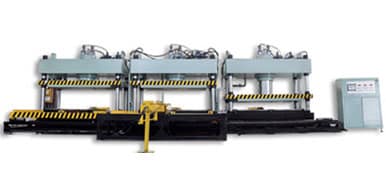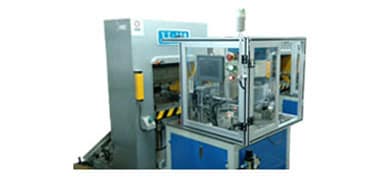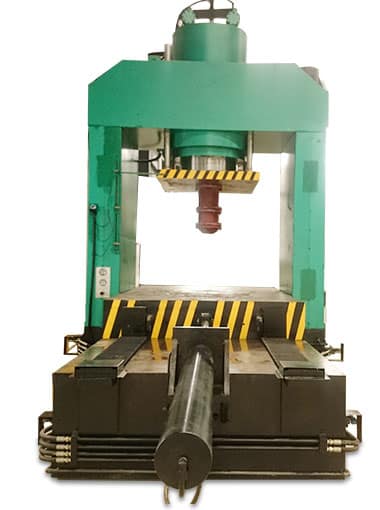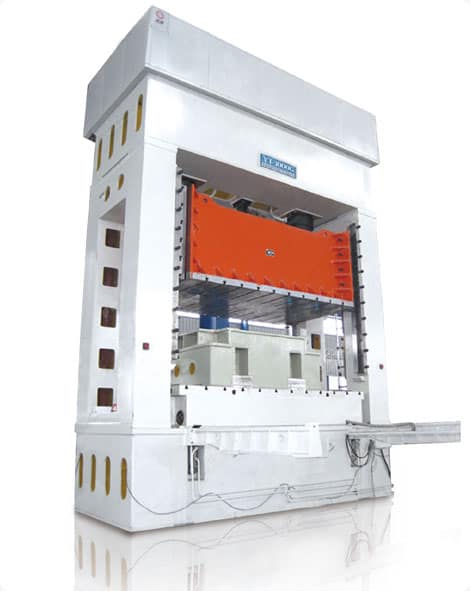How to Make a Manual Hydraulic Press
time:2023-10-28 views:(点击 984 次)
Manual hydraulic presses are mechanical devices that use a hydraulic cylinder to exert pressure on a base plate, powered by oil pressure generated from within the press itself through its hydraulic pump.
Hydraulic presses operate without complex gears or motors, which helps lower operational costs while producing full force along the entire stroke to create consistent pressure levels.
Frame
A manual hydraulic press's frame is vital to its strength, stability and longevity. Designed to withstand high pressure from its cylinders while providing support and alignment; absorb stress caused by impact from ram onto anvil; as well as absorb stress caused by impact ram's hitting anvil; the construction may differ depending on model; typically constructed from either bolted and welded parts or all made out of welded steel - it's important to take application considerations when choosing a frame for this machine.
A manual hydraulic press's bolster is another essential part. It supports and aligns your workpiece for pressure application over an extended period. Bolsters may be constructed from steel, stainless steel or cast iron; for optimal performance they should be strong enough to bear the weight of both ram and anvil, so choose heavy-duty options when choosing yours.
Hydraulic presses can be utilized for many different tasks, including deep draws, shell reductions, urethane bulging, forming, blanking, piercing, punching and assembly. They may also be utilized as testing devices like press fits. Their pressure settings can also be easily customized to meet the unique requirements of individual applications.
There are various types of hydraulic presses, from H-frame to stronger bench frames. While some have single or two cylinders for inflow and outflow of hydraulic fluid, others use three. Many press also come equipped with pressure gauges; however, these do not reflect actual exerted workpiece pressure known as Platen PSI.
Cylinders
Hydraulic presses harness the force of fluid to generate immense force, which is transferred via cylinders containing the ram and plunger, custom-designed for each application. A special hydraulic fluid--usually oil--serves as the medium that transfers this force within the system while also lubricating moving parts while protecting from temperature fluctuations that could compromise its performance.
The metal pipes used to power presses known as cylinders contain two ports for inflow and outflow of hydraulic fluid. Their size depends on how much pressure will be exerted on them; their heads feature seals designed to prevent pressurized oil leaking past where its interface lies between rod end and tooling interface. A Cylinder Application Engineer must review any selection for suitability with system requirements before choosing piston rod end options that meet those criteria.
The main purpose of a cylinder is to divide pressure zones in its barrel and transfer linear motion through its rod. Machined with grooves for fitting elastomeric or metallic seals and bearing elements to control pressure differential between left and right sides of its barrel, these cylinders can either move only under pressure or be double-acting; single-acting ones only move under pressure when under spring tension while double-acting models move both ways powered by fluid pressure alone.
The hydraulic press's plunger or "ram", also known as its long steel rod, extends from its cylinder and pushes against tooling attached to it. It is usually secured to a rigid frame at its base to help avoid slipperiness that could compromise equipment or cause further damage.
Pistons
At the core of every hydraulic press are its pistons, which use liquid under pressure to generate enormous mechanical force. Pascal's principle dictates that pressure of incompressible fluid remains constant over a given area; thus a small slave cylinder holds hydraulic fluid while a larger master cylinder contains an additional large piston used to push it when activated by its pump; when the latter activates and pushes against said slave cylinder's piston by applying pressure via pump action this creates tremendous amounts of force transferred via bed to anvils from which pressure then transfers directly onto anvil anvils via bed into which anvils receives further force which in turn transfers via bed over to anvils via bed to anvils which then transfers directly onto anvils via bed into Anvils themselves and anvils via bed directly onto anvils themselves.
Hydraulic fluid, often in the form of specialized oil, transfers force throughout a machine. It provides its primary force source while simultaneously lubricating moving parts to reduce friction. Furthermore, this fluid should have the capacity to handle high levels of pressure and temperature variations without cracking under strain.
Piston rings are small iron rings arranged loosely around a piston's rim to seal gas leakage and maintain proper pressure within its cylinder, as well as evenly disseminate pressure across its surface. They help provide gas sealing while also helping distribute pressure evenly across its surface area.
Hydraulic systems are constructed to be highly reliable, featuring safety features like pressure relief valves and emergency stop controls that ensure their proper use. Furthermore, these easy-to-adjust hydraulic presses make tailoring them to different applications possible by changing ram height, dwell duration duration, direction of force force etc. For laboratory experiments that require pressing samples manually this feature can be particularly crucial.
Levers
Hydraulic presses utilize hydraulic pistons to increase force for tasks like pressing, punching or shaping materials. Cylinders contain fluid such as hydraulic oil that creates pressure when pressure is applied at one end of a piston and transmits it across its entirety - this provides significant mechanical advantage that allows even small amounts of force exert much greater impact at its opposite end.
Pascal's Law, popularized by French mathematician Blaise Pascal, states that when subjected to constant uniform pressure across its entire surface area, "any body of fluid transmits that force undiminished to any point within that body". Hydraulic presses enable users to generate precise and powerful forces without complex gears or brakes - an invaluable asset in modern manufacturing processes.
Before using a manual hydraulic press, ensure your workspace is safe. Place the material you intend to press centrally onto the piston, slowly raise it for pressure application and slowly lower it again when pressure has reached desired levels - this process should continue until desired results have been reached.
Laboratory presses come in various sizes and configurations, so choosing one tailored to your specific application is of utmost importance. You may opt to automate it further using a programmable logic controller or human-machine interface which will improve precision, accuracy, reduce operator error risk and potentially save time - some hydraulic presses even come equipped with features that automatically stop when pressure exceeds preset limits!
Safety
Safety should always be your number one concern when operating any machine, but hydraulic presses require particular care when operating due to the tremendous force they use and potentially cause serious injury if improper care isn't taken. Familiarizing yourself with how it works and operating it as well as any special safety features it might contain like restraint devices (which hold material in place while using less force to operate it) or pressure-sensitive safety mats that sense when someone enters an unsafe zone are key factors when operating such presses safely.
Once an operator understands their machinery, it's vital for them to undertake regular preventative maintenance measures. This involves checking for leaks around seals, packings and fittings; replacing clean hydraulic oil at specified intervals; this helps ensure peak performance from equipment while eliminating potential ram issues.
Maintain a safe environment around your machine by clearing away potential trip hazards and keeping its surroundings free of debris, such as objects left lying around that could be trip hazards or items caught in rams. Also, it's wise to regularly inspect loose or damaged guards as well as ensure all safety features are functioning as they should.
Routine maintenance of manual hydraulic presses can save both time and money down the line while protecting employees and customers from harm or inconvenience if something doesn't function as it should. Learning how to care for these pieces of machinery will keep it running optimally while protecting employees and customers alike from unnecessary danger or disruptions if the equipment doesn't function as it should be.
Link to this article: https://www.ihydraulicpress.com/nsn/5097.html
Hot Articles
-
How to Make Dies For a Hydraulic Press
Hydraulic presses offer unmatched force and accuracy in material shaping processes. Their efficient functioning eliminates many factors that are c……
-
How Much Does Hydraulic Press Channel Make on YouTube?
The Hydraulic Press Channel is a YouTube channel featuring videos of objects being crushed with a 140-ton hydraulic press. Launched in October 201……
-
How to Make a Hydraulic Press at Home
A hydraulic press is an incredible machine that employs Pascal’s Law to generate immense forces. Consisting of two communicating cylinders &……
-
How Much Pressure Should a Hydraulic Press Have?
Hydraulic presses rely on incompressible liquid (typically oil) to transmit force, enabling force application more rapidly than would be possible wi……
-
Hydraulic Press Channel – How Much Money Does Lauri Vuohensilta Make on YouTube Crushing Things?
Hydraulic presses are essential tools in manufacturing businesses, used to break apart clocks, fruit, golf balls and much more. Lauri Vuohensilta ……
-
How to Make a Knife Using a Hydraulic Press
Hydraulic presses are powerful machines that offer tremendous value to both independent knifemakers and large manufacturers alike. From crushing o……
-
How Can Make a Small Hydraulic Hot Press?
Hydraulic presses can be indispensable tools in garages. Used to repair bearings and silent blocks, as well as produce fuel briquettes, they have ……
-
How to Make a Small Hydraulic Hash Press
Hydraulic hash presses use a powerful jack to apply constant pressure to filter bags filled with bubble hash, forcing its trichome heads to rupture,……
Latest News
-
How to Make a Pizza Hydraulic Press
Handcrafting pizza by hand can be entertaining for customers, yet labor intensive for your team. A dough press can help increase productivity while ……
-
How Much Force Does a Hydraulic Press Exert?
Hydraulic presses play an integral part of many manufacturing processes. Utilizing Pascal’s Law, these powerful machines produce immense force……
-
How to Make a Hydraulic Press With Syringes
Hydraulic presses have an array of uses in manufacturing, construction and even home use. They are powerful tools capable of binding materials toget……
-
How to Make a Hydraulic Press With Cardboard
Experienced garage workers know the value of having access to a hydraulic press is undeniable, as it’s invaluable for pressing bearings and ……
-
How to Make a Hydraulic Press Brake
Press brakes are versatile metal fabrication equipment used for bending, folding and shaping sheet metal sheets with precise control by applying for……
-
How Much Money Does Hydraulic Press Channel Make?
The Hydraulic Press Channel is a YouTube channel featuring various objects being crushed with hydraulic presses. Established by Finnish workshop o……
-
How Much Pressure Can a Hydraulic Press Produce?
Hydraulic presses are impressive machines capable of creating enormous force. Used across industries like metalworking, agriculture and recycling fo……
-
How to Make a Small Hydraulic Hash Press
Pressing plant product and hash into a portable hydraulic rosin press can be an easy DIY project for any fan of solventless extract. All it requir……






